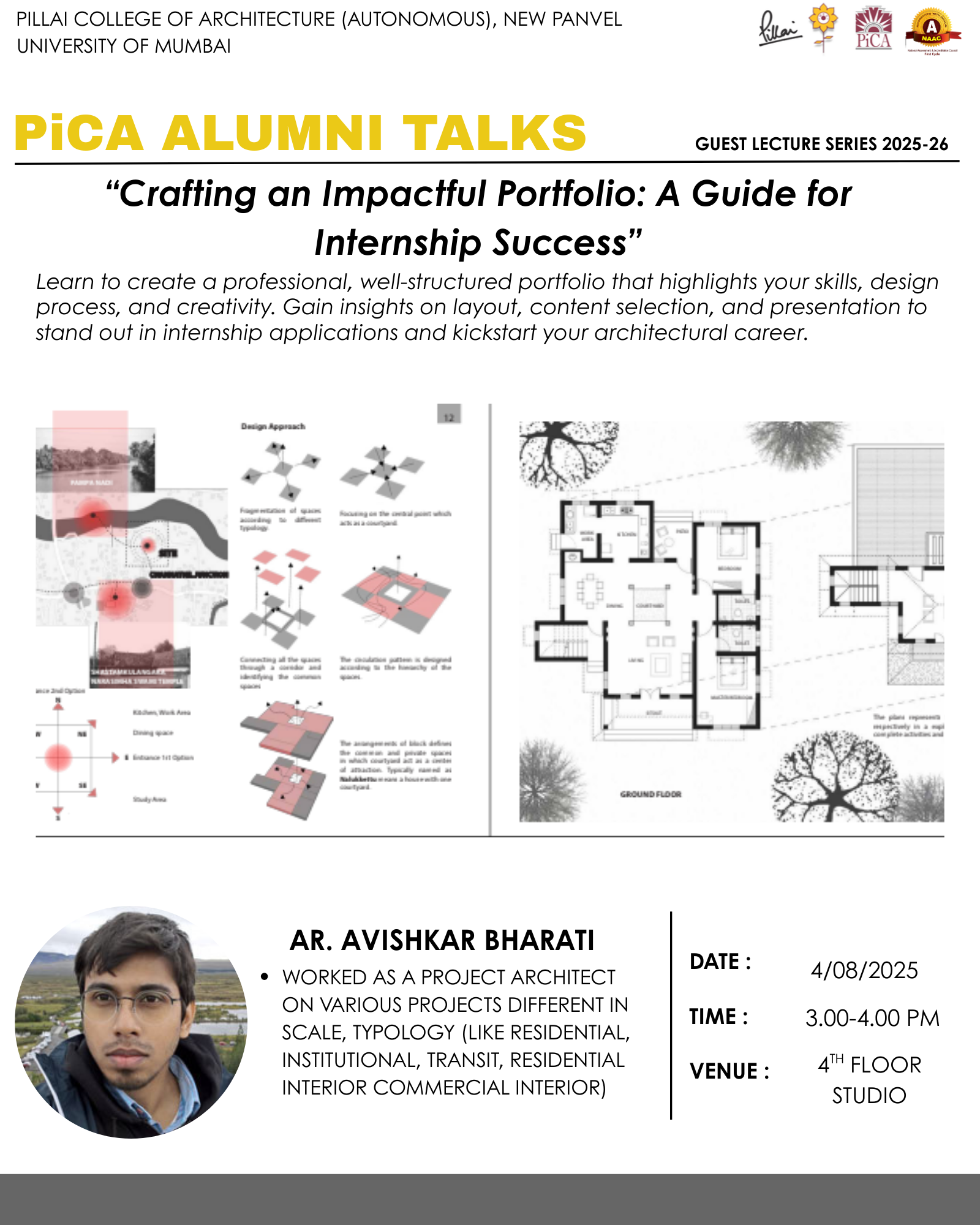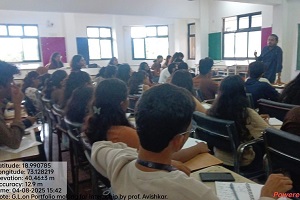| Subject | Internship |
| Year | 4th Year |
| Session | 2025-26 |
| Date | 4th August, 2025 |
| Time | 3:00 a.m. to 4:00.p.m. |
| Faculty Co-ordinator | Prof. Sarojini Lohot, Prof. Rupali Vaidya |
| Guest Lecture | Prof. Avishkar Bharati |
| No. of Students Participants | 44 |
The guest lecture was organized to equip students with the knowledge and skills required to create a professional, well-structured, and visually compelling portfolio that effectively showcases their academic work, design abilities, and technical skills for securing an architectural internship.
Objective was to guide students in creating a clear, concise, and professional portfolio that effectively communicates their design abilities, technical skills, and personal strengths.
Prof. AVISHKAR gave a brief introduction of what he will be covering in the lecture. He started with what does portfolio represents – Your portfolio is your visual resume — it should be precise, honest, and thoughtfully curated. It represents you in your absence.
He covered the following points: Portfolio Composition, Cover Letter, Interview Questions.
He explained creating a professional and concise portfolio is crucial. Limit it to 10–15 pages and ensure clarity in design thinking, layout, and graphics. Include your best academic projects that demonstrate growth, and clearly state your role in group work, giving credit to others. Highlight your top project with more detail and reserve a page or two for hobbies or extracurricular to showcase a well-rounded personality. Mention your software proficiency—such as AutoCAD, Sketch Up, Revit, Rhino, Adobe Suite, Lumion, or Escape — and include work samples using these tools where possible.
Always save your portfolio with a professional filename, e.g.,
Firstname_Lastname_Portfolio_2025.pdf.
Your cover letter should be personalized for each firm, reflecting your understanding of their work and expressing your learning goals. Keep it concise and focused.
During interviews, listen carefully and respond directly. Ask thoughtful questions about your role, daily work, and office culture showing curiosity, not entitlement. Be open to learning various aspects of practice beyond design.
Remember, employers typically review a portfolio for just 5–10 minutes, so make the first page engaging. Overall, your application should reflect clarity, eagerness to learn, and a respectful, professional attitude.






